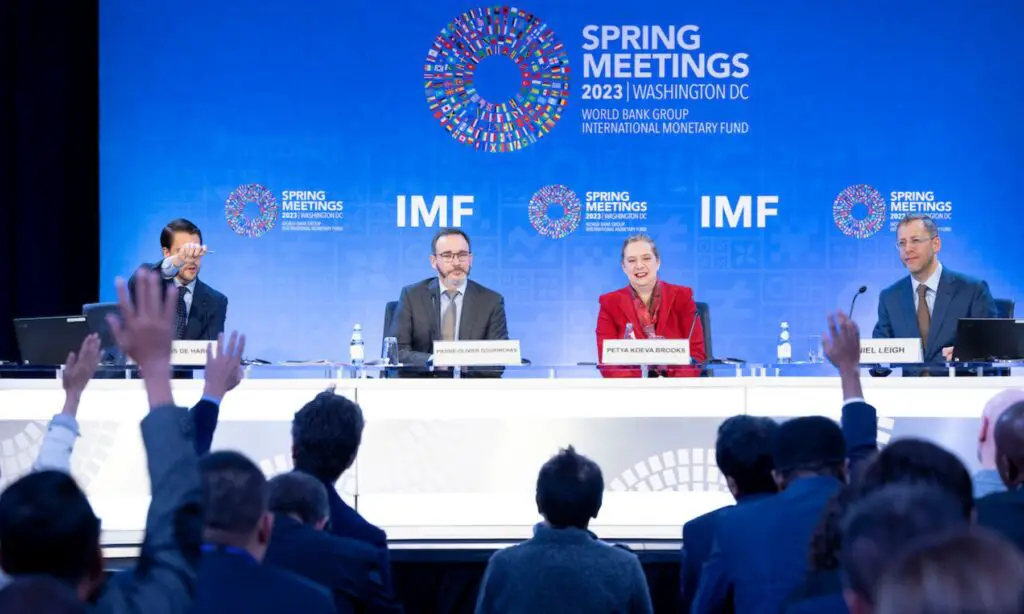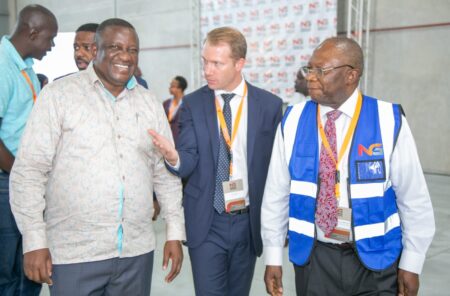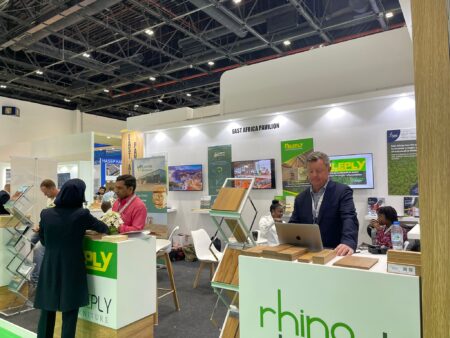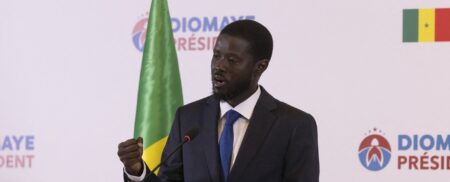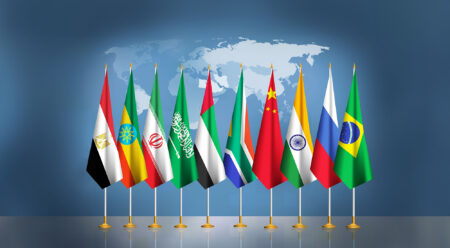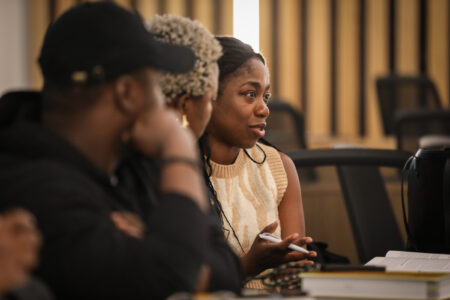- The World Bank projects Sub-Saharan Africa’s economic growth will dip to 3.1 per cent in 2023.
- Weakening growth is attributable to multiple crises including debt burden, high inflation, and slowing global economic activity this year.
- Policymakers across Sub Sahara Africa, however, remain hopeful of navigating the impact of global economic disruptions key among them the Russia-Ukraine war that has constrained food imports
A huge debt portfolio, high inflation and slowing economic activity across the globe are set to see Sub-Saharan Africa’s economic growth dip further to 3.1 per cent this year from 3.6 per cent posted in 2022.
The projection by the World Bank comes even as policymakers across Sub Sahara Africa remain hopeful of navigating the impact of global economic disruptions key among them the Russia-Ukraine war that is constraining food imports coupled with high fuel prices which is worsening inflation.
The World Bank and the International Monetary Fund started their Spring Meetings in Washington DC on Tuesday even as fears on high inflation, jitters in the global banking industry and geopolitical tensions grip the markets.
Economic growth in the region excluding large countries such as Angola, which is projected to post 2.6 per cent growth in 2023, Nigeria (2.8 per cent), and South Africa (0.5 percent), is estimated at 4.3 per cent this year.
The region’s growth is, however, expected to expand to 5.1 per cent and 5.2 per cent in 2024 and 2025, respectively.
Non-resource-rich countries are projected to grow 4.2 per cent in 2023 and to pick up to 5.1 per cent and 5.3 per cent in 2024 and 2025, respectively. The stronger performance of non-resource-rich countries is attributable to gains enjoyed from lower import bills and an expansion in services industries.
Real GDP growth in resource-rich countries will remain subdued at 2.4 per cent this year, rebound slightly to 2.9 per cent and 3.0 per cent in 2024 and 2025, respectively— but fall short of 3.7 per cent jump recorded in 2021, economist at the World Bank notes.
Growth for this group of countries is dragged down by lower commodity prices, pointing to strong dependence on the extractive sector.
Weak economic performance is expected among Economic and Monetary Community of Central Africa (CEMAC) countries in 2023 (2.7 per cent), while growth of West African Economic and Monetary Union (WAEMU) countries is expected at 5.5 per cent this year before posting faster economic expansion at 7 percent in 2024.
“Harnessing the potential of natural resources provides an opportunity to improve the fiscal and debt sustainability of African countries,” World Bank said.
Natural resources such as oil, gas, and minerals offer a huge economic opportunity for Sub-Saharan Africa economies even as the world transitions to low carbon systems.
Sub-Saharan Africa, which is home to more than one billion people, half of whom will be under 25 years old by 2050, is an expansive continent offering human and natural resources that have the potential to yield inclusive growth and eradicate poverty in the region.
With the world’s largest free trade area and a 1.2-billion-person market, the continent is rolling out measures and chatting an entirely new development path by harnessing the potential of its resources and people.
The region is composed of low, lower-middle, upper-middle, and high-income countries, 22 of which are fragile or conflict-affected. Africa also has 13 small states, characterized by a small population, limited human capital, and a confined land area. Despite these challenges, a number of countries in the region are showing resilience amidst multiple crises.
These include Kenya, Cote d’Ivoire, and the Democratic Republic of Congo (DRC) which grew at 5.2 per cent, 6.7 per cent, and 8.6 per cent respectively last year.
Tapping into energy resources can improve energy access, experts say, even as Africa faces a significant challenge to meet its universal, high-quality energy access goals.
Read: Why Kenya’s Central Bank governor wants to meet US Secretary of Treasury
Last year, about 600 million people in Africa, or 43 per cent of the continent, lacked access to electricity but the continent’s resource base and associated investments could help accelerate progress by developing diverse sources of energy.
Further, the scale-up of green energy investments and regional infrastructure could be leveraged to alleviate rural poverty and promote productivity gains because many natural resource projects are located in remote and rural communities.
Global growth
Overall, global growth is expected to slow to two per cent from 3.1 per cent in 2022, World Bank Group President David Malpass has revealed.
For the United States of America, the global lender is expecting a slowdown to 1.2 per cent from the 2.1 per cent growth recorded in 2022.
Several factors are weighing on the second half outlook among them being oil prices which have jumped back above $80 per barrel as easing US inflation report gave hopes that the Federal Reserve could be getting closer to slamming the brake on its cycle of interest-rate increases.
The recent banking sector stress is expected to dampen economic activities even as inflation pressures persist. The US month-over-month core inflation has been on a steady rise in the last five months.
“If we look at developing countries excluding China, we expect a slowdown to about 3.1 per cent in 2023 from 4.1 per cent in 2022. The concern in our recent reports is that slow growth will persist for years for many developing countries, increasing the fiscal stress and debt problems,” said Malpass during his opening remarks at the 2023 Spring Meetings.
He noted a combination of weak investment, higher interest rates, and relatively weak growth in the advanced economies will hamper growth, and the danger is acute due to inflation, currency depreciation, rising debt service costs, and the collapse of international reserves.
The diversion of natural gas to Europe presents grave obstacles to developing country production of electricity, fertilizer, and food. According to Malpass, these problems are severely constraining future growth and deepening inequality and fragility for developing countries.
During his visit of West Africa in March, where the World Bank is working to provide support in the face of the challenges, Malpass notes the normalization of interest rates after an artificial decade near zero has created a challenge for policymakers.
“This creates problems in terms of the duration mismatch as we’ve seen in the bank failures, liquidity shortages, and how to allocate the losses,” he said during his address in Washington D.C. adding that the duration mismatch will take time to digest.
With inflation persistent and the dollar weakening, the risk is that the losses will be allocated to those with lower incomes, including through inflation.
A second major problem is that the available global capital is being absorbed by a narrow group of advanced economies that have extremely high government debt levels.
“I’ll call them sinkholes. To make matters worse, their populations are aging rapidly and the peace dividend of the 1990s was used up,” Malpass said.
He is advocating for a range of new policies that would spur production to combat inflation and currency weakness, but the likelihood is a long period of slow growth, asset repricing, and capital moving in the wrong direction – toward a narrow group of governments and big corporations rather than to the small businesses and working capital that could add to global growth.
There are two exceptions to the slowdown: China and India. China’s GDP growth is rebounding to over five per cent in 2023, with strong private investment. Equally, there is also stability of China’s currency and the countercyclical nature of its monetary policy.
China recently ended Covid-19 pandemic lockdown, a move that has seen economic activities pick up. The government is encouraging growth in services, especially health care and tourism.
India continues to be one of the fastest-growing major economies in the world. “We’re looking for growth of 6.3 per cent in their financial year 23/24. They will feel some effect from the global slowdown. I was there in February and think it will take capital market liberalization for India to achieve their eight per cent growth goal,” the president notes.
On Wednesday, Malpass co-chaired the Global Sovereign Debt Roundtable with IMF managing director Kristalina Georgieva and India’s Finance Minister Sitharaman. The deputies met on April 3 and went through technical notes.
The goal is to share information earlier in the debt restructuring process and work toward comparable burden sharing. In the Spring Meetings, there has been discussion of a formal standstill on debt service at the request of the debtor country, and of the treatment of arrears and penalties.
Malpass also chaired the third Ukraine Ministerial Roundtable. War-battered Ukraine has immense recovery and reconstruction needs, and the World Bank estimates that there is an additional $11 billion funding gap in 2023 for critical expenditures.
There has also been substantial discussion with the bank’s board and shareholders on the mission, operations, and financing.
The global lender is moving to revise the International Bank for Reconstruction and Development (IBRD)’s minimum Equity-to-Loan Ratio to 19 per cent from 20 per cent, provide a pilot capital-market investors to invest in hybrid capital, and increase the size of its bilateral guarantee programme.
These initiatives can add up to $50 billion of financing capacity over the next ten years, Malpass notes. The IBRD offers loans to middle-income developing countries. It is the first of five member institutions that compose the World Bank Group.





